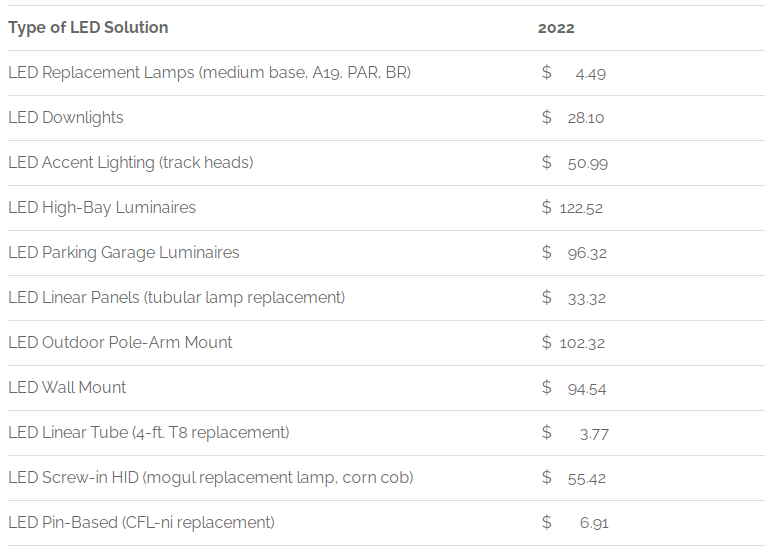DLC stands for Design Lights Consortium, a national group whose attention is on energy-efficient, high-quality lighting for the commercial industry. Through manufacturer data and testing, it’s a rating system that determines what lighting products are permitted for the use they’re intended for.
DLC keeps track of a product list (known as a Quality Products List) of high-quality, high standards and efficiency. To be eligible for this list, products must adhere to the strict DLC standards. Any DLC-listed lights have been DLC tested and certified.
What are the Technical Requirements of DLC V5.1?
The Design Lights Consortium was given a grace period to update its technical requirements for SSL (solid-state lighting), and it announced a reminder that products that failed to update to the DLC V5.1 SLL requirements would be removed from the DLC SSL Qualified Products List on July 1 and would no longer qualify for energy-efficiency incentives. The goals the DLC has for V5.1 are:

- Better color rendering and consistency via the new color quality requirements.
- Lighting manufacturers can feel more confident in the glare performance when using the DLC Premium classification.
- Nearly all products on the list are dimmable, which helps to boost energy savings and increase user satisfaction.
Should You Use a Light with DLC?
DLC lights go through a series of tests, making them a better choice in the long run, as these tests determine quality and efficiency. They also determine if the manufacturer’s claim of light quality and lumen output are accurate. These lights are tested in the DLC lab, and results are available via the website. With stringent testing, you can feel confident that you’re getting the noted lumens – THD and CRI amount. In most cases, you must have a DLC-listed product to qualify for the rebate.
A Look at Energy Rebate Program
The Energy Rebate Program is a cash rebate incentive program eligible for people who switch to LED Corn Bulbs, LED retrofit lights, or any other LED fixture. When the switch is made, the energy company pays the person a rebate for it. The funds are typically seen in the utility bills, with the lower demand for energy usage. It also helps the environment and your wallet.
How Many Rebates You can Receive
With rebates added to lighting upgrade proposals, it can improve the return on investment and likelihood of approval. However, to receive these rebates, it’s important to do some research. Some options to receive the rebates include control devices like networked lighting control systems or sensors.

BriteSwitch noted the process of getting a rebate can take up to five months, as the programs are random and can change at any time. It’s why people need to learn what the requirements are. It’s important people know what they get because it can take nearly 40 days to get a check back.
Professionals who sell upgrades can also offer rebates, helping to ascertain business. However, the rebate may not be as much as advertised or even provided. Proposal wording must be carefully thought out to avoid false advertising and a loss of money.
Preapproval starts even before installation, with all the forms being filled out. Some regions may not have any available rebate funds due to early participation. You also need to be mindful that the exact LED product you have is on the DLC list. You may also be asked for an online inspection to ensure the product has been installed.
How to Check the Amount of Possible Rebate
BriteSwitch noted that the average LED product rebates had remained steady in 2021 after yearly drops of 20% because of a decline in product costs. The thought for this is the pandemic, causing a drop in rebates and cost stabilization. The rebates for 2022 are still holding steady, reflecting the pandemic and rising costs associated with the disruption in the supply chain.

How can you know if you qualify for a rebate? For example, if you purchase the Lepro 150W High Bay Light, you need to visit the product page (https://www.lepro.com/150w-ufo-led-high-bay-light.html) and click on “Rebates”. There, you fill the form out and hit “Find Your Rebates.”

DLC vs. Energy Star Program
The DLC is similar to the Energy Star Program (a system most people recognize). The DLC’s goal is to speed up the construction industry’s use of energy-efficient lights, which they do through three fundamental techniques: public policy influence, teaching techniques, and education. The difference is that DLC is for fixtures, whereas Energy Star is for lamps.
Here are Lepro LED Lighting Fixtures with DLC :
| Category | SKU | Product Name | DLC |
|---|---|---|---|
| UFO High Bay Light | 350009-NW-US | 100W UFO LED High Bay Light | V5.1 |
| UFO High Bay Light | 350010-NW-US | 150W UFO LED High Bay Light | V5.1 |
| UFO High Bay Light | 350011-NW-US | 240W UFO LED High Bay Light | V5.1 |
| Linear High Bay Light | 350012-NW-US | 165W Linear High Bay Light | V5.1 |
| Linear High Bay Light | 350013-NW-US | 220W Linear High Bay Light | V5.1 |
| LED Wall Pack Light | 630009-NW-US | 40W LED Wall Pack Light | V5.1 |
| LED Wall Pack Light | 630010-NW-US | 80W LED Wall Pack Light | V5.1 |
| LED Wall Pack Light | 630011-NW-US | 120W LED Wall Pack Light | V5.1 |
Here are Lepro LED Lighting Fixtures with Energy Star:
| Category | SKU | Product Name | Energy Star |
|---|---|---|---|
| LED Shop Lights | 880002-NW-US-6 | 6 Pack 4ft 42W Neutral White Shop Light | Yes |
| LED Shop Lights | 880002-DW-US-6 | 6 Pack 4ft 42W Daylight White Shop Light | Yes |
Click for more information about rebates you can get with Lepro.




